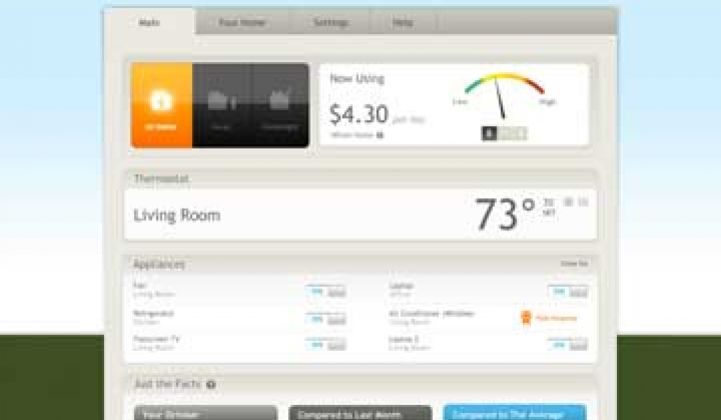A long, long time ago, let’s call it mid-2010, there was a host of residential energy management companies with serious hardware offerings to sell to utilities.
Even though there were millions of smart meters being installed in the U.S., it turned out that most utilities weren’t interested in purchasing hundreds of thousands of in-home displays and connected thermostats to shave peak demand from startups entering the space.
EnergyHub was one of those companies. “The advantage of utilities is they can push it on a big scale," Seth Frader-Thompson, CEO of EnergyHub, said in October 2010. “Or that’s the dream.”
It turned out to be just a dream. Instead, the tables have turned, and now companies like EnergyHub are leveraging their presence in the marketplace to do business with utilities that need all those air-conditioners that their networks manage.
That doesn’t mean that there is no market for home energy management through utilities. EnergyHub just announced two new cooperative utility contracts with Gibson Electric and Mid-South Synergy. Gibson, which is part of Tennessee Valley Authority, will offer EnergyHub’s smart thermostats and accompanying Mercury platform to provide multiple megawatts of demand reduction while also giving added value to customers. Energate is providing up to 150,000 thermostats to Oklahoma Gas & Electric in coming years to reduce peak.
Even though EnergyHub continues to sign up utilities for its hardware offering, far more of its business is coming from offering its Mercury platform as a software-as-a-service product. The SaaS does about ten times as much business as the hardware/software offering to utilities. “It was overnight,” Frader-Thompson said of his company’s success in software-only. “I won’t say it was exponential, but only because nothing in the utility business is exponential.”
Mercury allows people to optimize their energy settings on a smart thermostat, but it also offers feedback based on the household’s usage and comparison to neighbors. EnergyHub says its system can save up to 20 percent on home energy bills. Mobile apps and websites to go with the service can also be white-labeled.
Mercury is the platform for Radio Thermostat of America (sold as 3M) thermostats, which sell for just $99. “The thermostat market already exists, and the percentage that’s networked is skyrocketing,” said Frader-Thompson. “It’s a really good place for us to be sitting.”
EnergyHub is partnered with Earth Networks (known for WeatherBug) to have its e5 service run on top of the Mercury platform, which can help drive more savings by incorporating the company’s weather data.
With millions of connected thermostats installed in homes, the business opportunity is for companies to offer software programs on top of the devices that utilities can use to shed load, without having to pay for the devices and get into the home. EnergyHub said it currently has at least three contracts with utilities leveraging the SaaS platform from its retail customer base.
EcoFactor is also the roundabout way into homes, working with Comcast to deliver its cloud-based energy management system. Home service providers are another popular partner for startups that are looking to get their software into homes.
Unlike slow-moving and heavily regulated utilities, the promise of telecoms is that they understand networking and aren’t afraid to go into the home. They also have millions of customers, whereas only a few large investor-owned utilities can boast such numbers. AlertMe closed a deal with Deutsche Telecom last fall, and Asoka Corp. is working with Swisscom.
For utilities, the networks from third-party providers mean access to customers without all the pain of customer acquisition. “You can just walk into a utility and ask if they need more demand response in their territory,” said Frader-Thompson. “In just a few days, you can have many megawatts of demand response turned on.” For utilities that are looking to scale up residential demand response, whether through dynamic pricing or rebates, offering programs to the thermostats already within their territory could be an attractive option.
Eventually, as public utility commissions put in data sharing rules, EnergyHub thinks that the hardware side of the business may pick up, but many companies, including EnergyHub, had underestimated just how long it would take.
In the meantime, the consumer side has come along much faster than many had anticipated. All of the big-box stores are making a play in the connected-home space, along with telecoms and home security companies. The selling point is less about energy savings, but more about home control and convenience. For example, EnergyHub says its users log-in on average once a day, mostly on mobile, and that figure does not drop off after people have had their devices for a while. People like controlling their thermostats from their iPhones, and it's not to save $0.50 that day.
“Who knows why someone went out and bought a networked thermostat?” said Frader-Thompson. “Once it’s in, it’s a potential demand response asset.”



